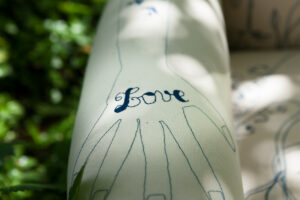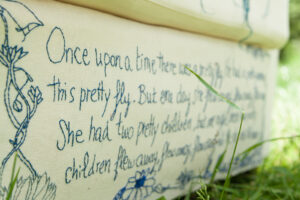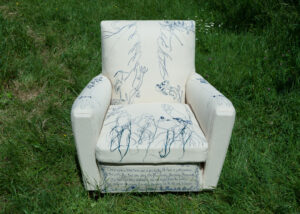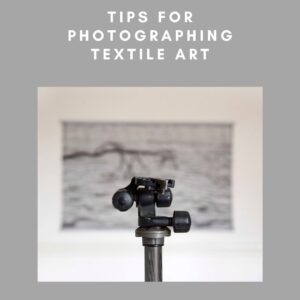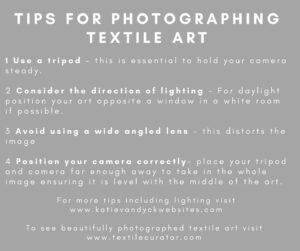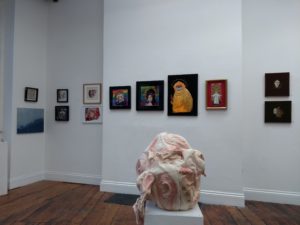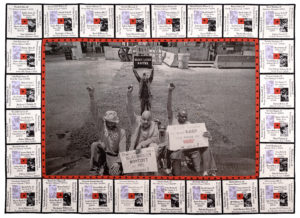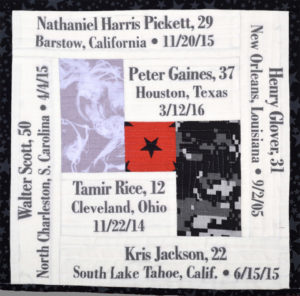Art textiles by Helene Barrier at Iconoklastes
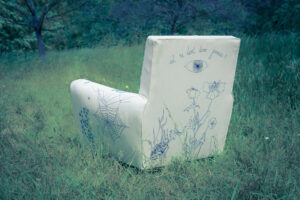
French textile artists Helene Barrier also known as Ikonoclastes has worked in various studios and art residences around the world but is now based in Paris. Her work often includes upcycling and I caught up with her to ask her about this beautiful piece she created called Mitch.
What is your background in textiles?
Most of my craft comes from experimenting with various materials in a sort of instinctive way. I would eventually learn specific technics (like serigraphy or ceramic) with other artists, sharing trades and building friendships around the world.
Tell me more about Mitch
It all started with Charles Laughton’s ‘The night of the Hunter‘. In the movie the main character is played by Robert Mitchum, which inspired the name ‘Mitch‘. ‘Love,’ and ‘Hate,’ were the first two words I embroidered on the armchair, matching Mitchum’s on screen tattoos, and breathing a new life into the old piece of furniture. I then imagined what other types of tattoos could be hidden under the fake preacher’s dark clothes, and the armchair became a mirror image of the character’s body, a heavy shape filled with mystery and a sombre duality.
Dark blue lines of thread spread like muscle fibers in all directions, in either tension or looseness, drawing flora and fauna and animal shapes reminiscent of the nocturnal environment of the movie. The Love side of the armchair displays a safe and welcoming scenery of houses, while the Hate side bears the threat of a large spiderweb ready to ensnare the two children in the story. On the back, right above a wide open eye, one can read ‘Does he ever sleep?’, an ominous reference to the relentless hunter.
Loose threads on the top of the seat are a reminder of the river and its vegetation.
I always grounded my work in a spirit of upcycling, giving a new life to discarded objects of everyday’s life, and Mitch turned out to become, through more than 400 hours of work, one of my favourite pieces.
Find out more about Helene Barrier at www.iconoklastes.com and her blog http://iconoklastes.blogspot.fr
iconoclastes
iconoclastes




